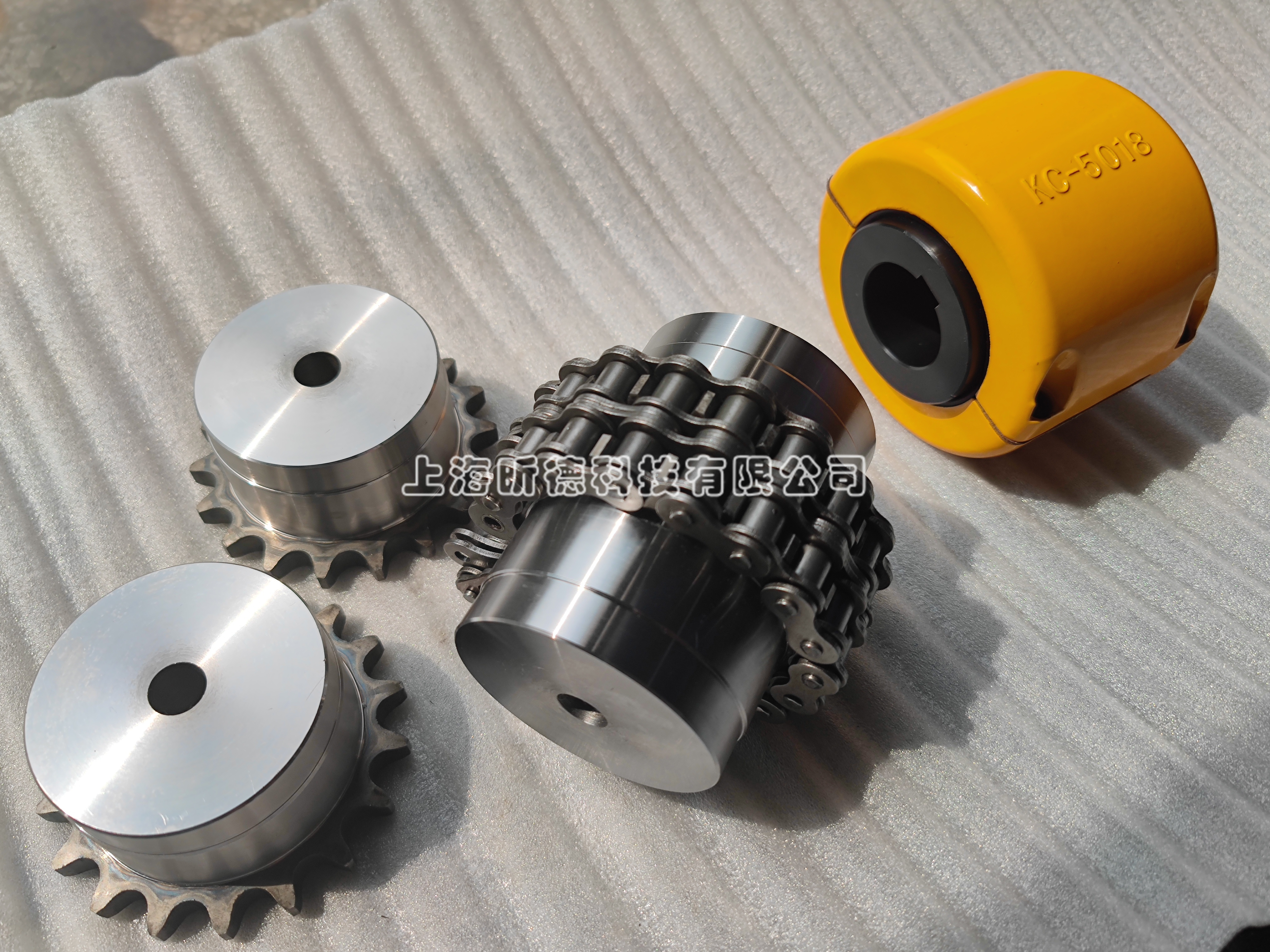Roller Chain Couplings: These Maintenance Tasks Require Regular Execution
Roller chain couplings, as crucial mechanical transmission components, are characterized by their simple structure, easy assembly and disassembly, compact size, lightweight nature, and certain compensation capabilities. In daily use, to ensure the normal operation and longevity of roller chain couplings, regular maintenance is of utmost importance. In this article, Xinde will provide a detailed introduction to the maintenance tasks that roller chain couplings require on a regular basis.

I. Appearance Inspection and Cleaning
-
Daily Appearance Inspection
Before starting the machine each day, the appearance of the roller chain coupling should be inspected first to confirm that there are no signs of damage, deformation, or corrosion. Additionally, the tension of the roller chain should be monitored to ensure it is neither too tight (which would exacerbate wear) nor too loose (which could lead to chain skipping).
-
Regular Cleaning
Regularly clean the dust, oil stains, and rust from the surface of the coupling to prevent them from affecting the lubrication effect and accelerating wear. When cleaning, appropriate tools and methods should be used to avoid causing secondary damage to the coupling.
II. Lubrication and Maintenance
-
Lubrication Specifications
The lubrication of roller chain couplings significantly impacts their operational performance. Appropriate lubrication specifications should be confirmed, with grease generally being sufficient for lubrication. In severe operating conditions, aluminum disulfide can be added to the grease to improve the lubrication effect. For roller chain couplings operating at high speeds, lubricating oil can be considered, but it is important to ensure tight sealing and, if necessary, apply sealant.
-
Regular Lubrication
Apply an appropriate amount of lubricating oil to the roller chain coupling regularly to reduce friction and minimize wear. The lubrication cycle should be determined based on specific circumstances, with a general recommendation of lubricating every certain period (such as monthly or quarterly).
III. Tightening and Adjustment
-
Tightening Connection Bolts
Regularly inspect the connection bolts of the roller chain coupling to ensure they are secure and reliable. If any are found to be loose or missing, they should be tightened promptly to prevent further damage.
-
Adjusting Roller Chain Tension
Follow the equipment manual or maintenance guide to regularly adjust the tension of the roller chain to maintain optimal working conditions. Proper tension is essential for ensuring transmission efficiency and the lifespan of the roller chain.
IV. Component Inspection and Replacement
-
Inspecting Wear Parts
Regularly inspect the wear of vulnerable components such as bearings and sprockets in the roller chain coupling. If any issues such as difficulty in rotation, increased noise, or excessive temperature are detected, they should be replaced immediately to prevent the fault from expanding.
-
Replacing Worn Components
For double-row chain couplings, the joint pin shaft and middle chain plate mating area are prone to wear and should be replaced promptly. Additionally, due to the different force conditions on the driving and driven sides during coupling operation, the driving and driven sides can be periodically swapped and the roller chain flipped 180 degrees to extend the service life.
V. Special Maintenance and Precautions
-
Avoiding Overloading
Overloading of roller chain couplings is strictly prohibited to prevent equipment damage and personal injury. Ensure that the roller chain coupling operates within its rated load range to minimize wear and damage risks.
-
Reducing Start-Stop Cycles
Minimize the number of start-stop cycles for the roller chain coupling to avoid affecting its service life. When the equipment is shut down, the coupling should be promptly cleaned and lubricated to ensure its normal operation during the next use.
-
Handling Special Situations
In special circumstances, such as when the roller chain coupling exhibits abnormalities (such as unusual noises or overheating), it should be immediately shut down for inspection or replacement. Do not force operation under such conditions.
VI. Training and Record-Keeping
-
Professional Training
Provide professional training for operators and maintenance personnel to enhance their capabilities in understanding roller chain coupling performance, fault identification, and emergency handling. This helps in promptly identifying and resolving issues, reducing downtime due to faults.
-
Establishing Maintenance Records
Establish a comprehensive maintenance record archive, detailing information such as the time, content, replaced parts, and effects of each maintenance task. This provides a valuable reference for subsequent maintenance and helps in better understanding the usage status and maintenance history of the roller chain coupling.

The maintenance of roller chain couplings is a meticulous and important task. By regularly performing tasks such as appearance inspection and cleaning, lubrication and maintenance, tightening and adjustment, component inspection and replacement, as well as special maintenance and precautions, the service life of roller chain couplings can be effectively extended, the efficiency of the transmission system can be improved, and downtime due to faults can be reduced. Additionally, strengthening professional training for operators and maintenance personnel and establishing a comprehensive maintenance record archive are also crucial measures for ensuring the normal operation of roller chain couplings.



